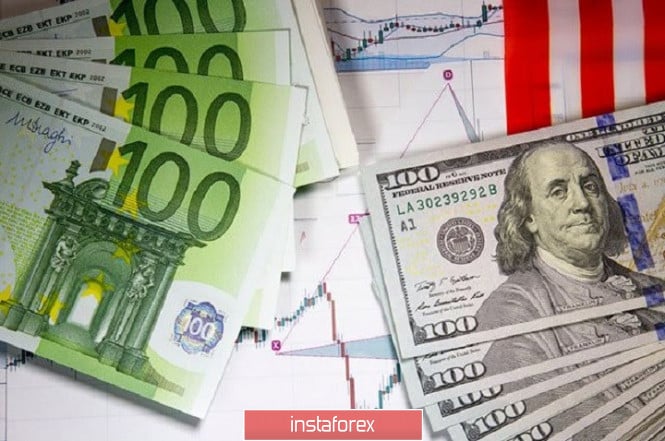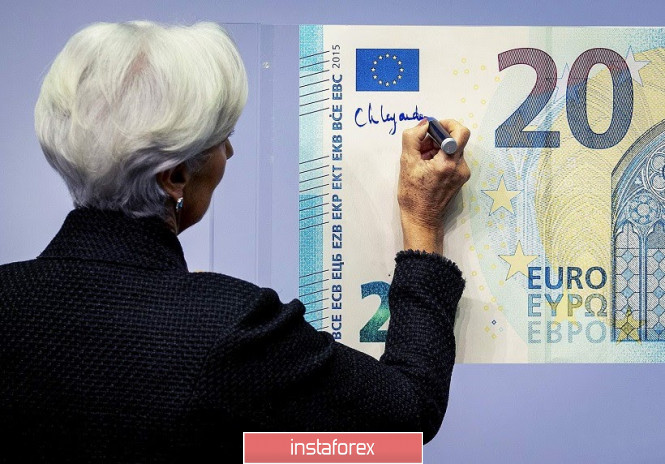The euro-dollar pair for the final of the last trading week still went below 1.1100, completing trading at 1.1090. A strong bearish momentum, which was due to the general strengthening of the US currency. In anticipation of a long weekend (today, the United States is celebrating Martin Luther King Day), many traders took profits, and therefore the price movement became avalanche-like. Monday's Asian session turned out to be much calmer. The downward impulse died away, and the pair began to drift in the flat in anticipation of the next news drivers.

It is worth noting that this week the main news for the pair will come from Europe. Key macroeconomic releases and the ECB January meeting will determine the pair's vector of movement, while the dollar will be content with secondary American statistics.
The macroeconomic calendar is practically empty on Monday for both the euro and the greenback. The US trading floors are closed, and only the German producer price index will be published during the European session. The Bundesbank's monthly report will also be published, but it can affect the dynamics of the pair only if the rhetoric of members of the German regulator is very different from the previous rhetoric of ECB members. Also today, the head of the European Central Bank, Christine Lagarde, will speak, but with a high degree of probability, the market will ignore this event. The fact is that she will deliver a solemn speech at a gala reception in Belgium. As a rule, officials do not raise serious topics during such events.
On Tuesday, January 21, all attention will be focused on the mood indexes in the business environment from the ZEW Institute. Both in Germany and in the whole eurozone, positive dynamics is expected. So, the German index last month for the first time since May last year out of the negative region, reaching 10.7 points. Experts are also optimistic in January. In their opinion, the figure will reach 15 points. The pan-European indicator in the same way left the territory of negative values in December, rising to 11 points. The January index should grow to 16.3 points. The European currency will receive support if the real numbers coincide with the forecast values.
In addition, the World Economic Forum kicks off in Davos on January 21, and runs until Friday, January 24. This event will bring together more than a hundred billionaires from 36 countries (in particular, Bill Gates, Mark Zuckerberg and George Soros). In addition, Donald Trump is also expected to attend the forum, along with US Treasury Secretary Stephen Mnuchin. Their comments may affect the dynamics of the pair.
Only minor macroeconomic releases from the US in the real estate market will be published on Wednesday, January 22. We are talking about the housing price index and the volume of home sales in the secondary market. Both indicators should show positive dynamics, but they are unlikely to become catalysts for price movement.
But the main event of the week will take place on Thursday, January 23,: the ECB will hold its first meeting this year. Let me remind you that last week the minutes of the December meeting was published, which confirmed the expectant position of the regulator. Members of the central bank expressed cautious optimism about the latest macroeconomic reports (first of all, we are talking about restoring core inflation) and noted the weakening concern about foreign trade. And although the ECB has listed and continuing risks (for example, in the field of industrial production), traders drew attention to a rather "hawkish" wording. Regulator members said the ECB's monetary policy could be adjusted to avoid "unwanted side effects." A rather encouraging phrase, given the dynamics of inflationary processes in the eurozone.
According to many experts, the ECB will remain "cautious optimism" in January. After all, since the last meeting, the signing ceremony of the first phase of the trade transaction took place, and European inflation continued to grow. The general consumer price index in December reached 1.3% from the previous value of 1.0%. Core inflation also showed positive dynamics - the core index was at the same level as in November, that is, at around 1.3%. This is the strongest indicator growth over the past six months. In other words, members of the ECB have certain reasons for optimism.

The final chord of the trading week will be PMI indices. If these releases follow the ZEW trajectory, the euro will receive additional support for its corrective growth. In general, experts expect a positive trend - especially in the provision of services. As for the manufacturing sector, minimal growth is forecasted here - indices will still remain below the key 50-point level. But the very fact of a positive trend can strengthen the position of the single currency.
The situation is still ambiguous from a technical point of view. To confirm the downward trend, the bears of the pair need to go below 1.1050 (the lower line of the Bollinger Bands, which coincides with the upper boundary of the Kumo cloud on D1). For EUR/USD bulls, the task is more complicated - they need to overcome the price level of 1.1160 so that the price is between the middle and upper lines of the Bollinger Bands, and the Ichimoku indicator forms a bullish "Parade of Lines" signal. In this case, they will have a chance to re-test the area of the 12th figure.
The material has been provided by InstaForex Company - www.instaforex.com